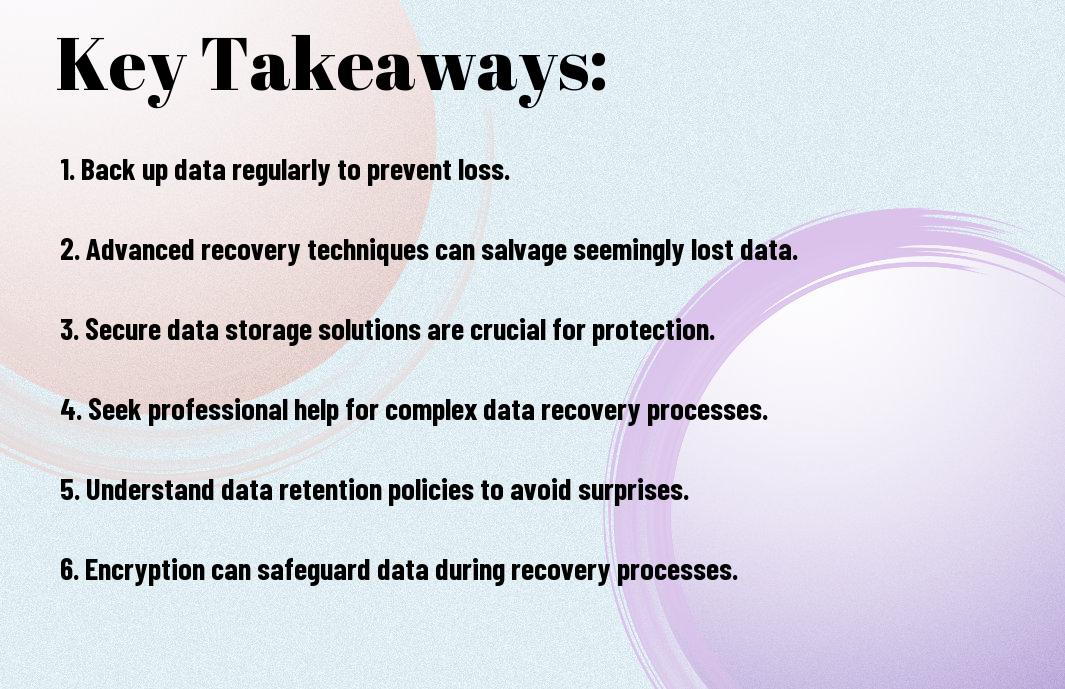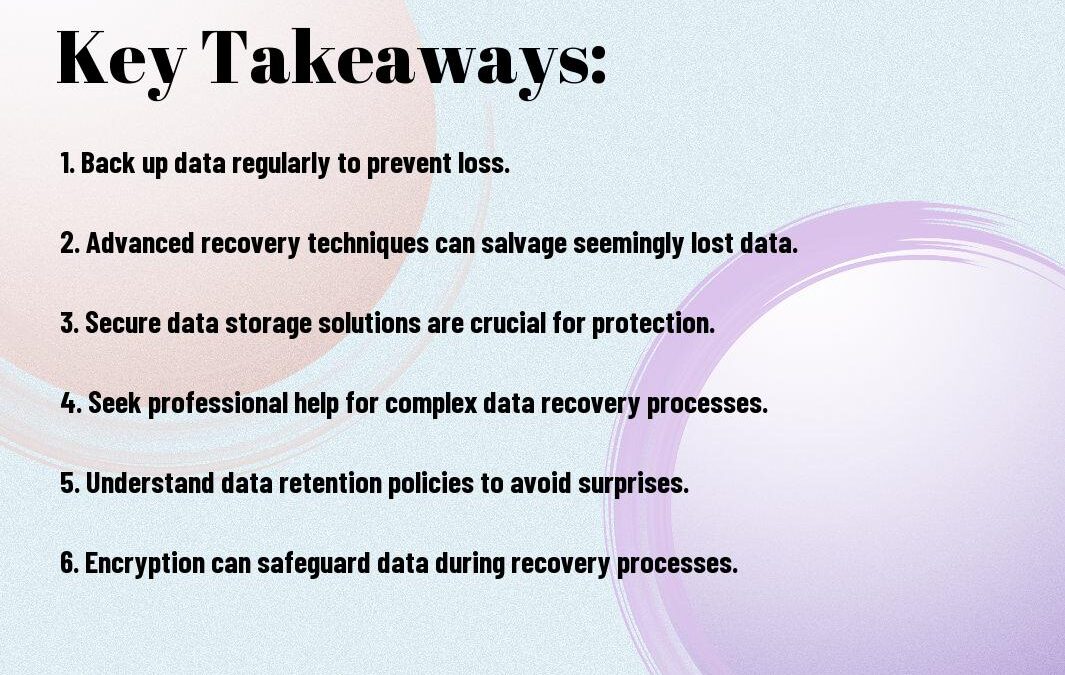It’s a common misconception that once data is lost, it’s gone forever. However, with advancements in technology, there are sophisticated recovery techniques available that can help retrieve seemingly lost data. In this blog post, we will explore some of these advanced methods and shed light on how your precious data could be saved even in the most challenging situations. Stay tuned for a fascinating journey into the world of data recovery!

The Dangers of Data Loss
Common Causes of Data Loss
Data loss can occur due to various reasons such as hardware malfunctions, software corruption, human error, viruses, and natural disasters. It is crucial to implement robust backup strategies to prevent the loss of critical information.
The Consequences of Data Loss
Data loss can have severe implications for individuals and businesses. It can lead to financial setbacks, reputation damage, legal issues, and productivity disruptions. Recovering lost data can be costly and time-consuming, emphasizing the importance of proactive data protection measures.
With the increasing reliance on digital data in today’s interconnected world, safeguarding information from potential loss is paramount. Implementing data recovery techniques can help retrieve valuable data and mitigate the adverse effects of data loss.
Advanced Recovery Techniques
Any
- File Carving and Data Reconstruction:
Advanced recovery techniques involve file carving and data reconstruction to retrieve lost or damaged files. File carving is the process of extracting files based on content rather than metadata. This technique scans the raw data for specific file signatures and reconstructs them, even if the file system is corrupt or missing.
Disk Imaging and Sector-by-Sector Analysis
With disk imaging and sector-by-sector analysis, a complete copy of a storage device is created, including empty sectors and deleted data. This method captures the exact state of the drive, allowing for a thorough examination of each sector for potential data recovery.
The sector-by-sector analysis involves examining the entire storage device, sector by sector, to identify and recover data fragments. This meticulous process ensures that no data is overlooked, providing a comprehensive recovery approach for damaged or corrupted storage devices.
Overcoming Data Recovery Challenges
Dealing with Corrupted Files and Folders
Many individuals face the nightmare of dealing with corrupted files and folders, leading to potential data loss. When encountering this issue, it is crucial not to panic and to seek professional help from data recovery experts. Attempting to fix the corruption without the necessary knowledge and tools could result in permanent data loss.
Recovering Data from Physically Damaged Devices
Any physical damage to storage devices can present a significant challenge when it comes to data recovery. In such situations, it is crucial to consult with specialists who have experience in handling physically damaged devices. They can provide insights into the best recovery techniques and increase the chances of salvaging valuable data.
Dealing with physically damaged devices requires delicate handling to avoid further data loss. These experts have the tools and expertise to assess the extent of the damage and determine the best course of action for retrieving the data. Whether it involves repairing the device or extracting the data through advanced techniques, seeking professional help is crucial in such scenarios to maximize data recovery success.
Summing up
Considering all points discussed in “Did You Know Your Data Could Be Saved? Exploring Advanced Recovery Techniques,” it becomes evident that data recovery has evolved to a level where even seemingly lost data can be salvaged. By delving into advanced techniques and tools, individuals and businesses can protect their valuable data with confidence, knowing that there are solutions available even in the most challenging situations.

